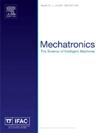Construction of hierarchical health indicators for explainable monitoring in multi-component mechatronic systems
IF 3.1
3区 计算机科学
Q2 AUTOMATION & CONTROL SYSTEMS
引用次数: 0
Abstract
The development of explainable health indicators (HIs) for multi-component mechatronic systems is vital for monitoring their performance, ensuring their reliability, and optimizing their operational efficiency across a wide range of industries. These indicators play a pivotal role in detecting and diagnosing faults, assessing system health, and guiding maintenance decisions. However, achieving explainability in HIs poses significant challenges, including the selection of the most relevant sensors, the accurate modeling of degradation trends influenced by maintenance activities, and the integration of component dynamics into a system-level representation. To address these challenges, we propose a novel methodology for constructing hierarchical HIs — a two-level structure where component-level degradation signals are first modeled individually, then systematically aggregated to form a comprehensive system-level health representation. The proposed approach, named TRSAE, incorporates an automated sensor selection process to identify the most important sensors, reducing redundancy while improving interpretability. Furthermore, maintenance and downtime effects are explicitly integrated into the modeling process to ensure a more realistic and reliable assessment of system health. By tackling these challenges, our methodology improves transparency in system behavior, strengthens diagnostic capabilities, and builds trust in predictive maintenance decisions. The proposed methodology is validated through a case study in an iron mining system, an environment characterized by extreme operating conditions and continuous heavy loads that accelerate the degradation of critical components. The case study demonstrates how hierarchical HIs can capture complex degradation dynamics, optimize sensor usage, and improve remaining useful life (RUL) predictions, offering actionable insights for proactive maintenance planning and reliable system operation.
多部件机电系统可解释监测的分层健康指标构建
多组件机电一体化系统的可解释健康指标(HIs)的发展对于监测其性能、确保其可靠性和优化其在广泛行业中的运行效率至关重要。这些指标在检测和诊断故障、评估系统健康状况以及指导维护决策方面发挥着关键作用。然而,在HIs中实现可解释性提出了重大挑战,包括选择最相关的传感器,受维护活动影响的退化趋势的准确建模,以及将组件动态集成到系统级表示中。为了解决这些挑战,我们提出了一种构建分层HIs的新方法——一个两级结构,其中组件级退化信号首先单独建模,然后系统地聚合以形成一个全面的系统级健康表示。该方法被命名为TRSAE,采用自动传感器选择过程来识别最重要的传感器,减少冗余,同时提高可解释性。此外,维护和停机影响被明确地集成到建模过程中,以确保对系统健康状况进行更现实和可靠的评估。通过应对这些挑战,我们的方法提高了系统行为的透明度,增强了诊断能力,并建立了对预测性维护决策的信任。提出的方法通过一个铁开采系统的案例研究得到验证,该系统的环境特点是极端的操作条件和持续的重载,加速了关键部件的退化。案例研究展示了分层HIs如何捕获复杂的退化动态,优化传感器使用,提高剩余使用寿命(RUL)预测,为主动维护计划和可靠的系统运行提供可操作的见解。
本文章由计算机程序翻译,如有差异,请以英文原文为准。
求助全文
约1分钟内获得全文
求助全文
来源期刊

Mechatronics
工程技术-工程:电子与电气
CiteScore
5.90
自引率
9.10%
发文量
0
审稿时长
109 days
期刊介绍:
Mechatronics is the synergistic combination of precision mechanical engineering, electronic control and systems thinking in the design of products and manufacturing processes. It relates to the design of systems, devices and products aimed at achieving an optimal balance between basic mechanical structure and its overall control. The purpose of this journal is to provide rapid publication of topical papers featuring practical developments in mechatronics. It will cover a wide range of application areas including consumer product design, instrumentation, manufacturing methods, computer integration and process and device control, and will attract a readership from across the industrial and academic research spectrum. Particular importance will be attached to aspects of innovation in mechatronics design philosophy which illustrate the benefits obtainable by an a priori integration of functionality with embedded microprocessor control. A major item will be the design of machines, devices and systems possessing a degree of computer based intelligence. The journal seeks to publish research progress in this field with an emphasis on the applied rather than the theoretical. It will also serve the dual role of bringing greater recognition to this important area of engineering.
 求助内容:
求助内容: 应助结果提醒方式:
应助结果提醒方式:


